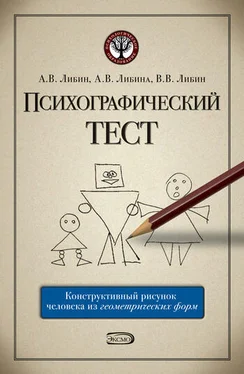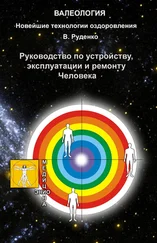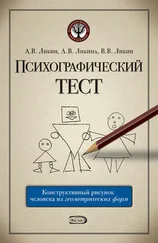Darwin, C. (1877). A biographical sketch of an infant. Mind, 11, 286–294.
Delboeuf, J. (1883). «Elements de psycho-physique», Paris.
Dellinger, S. (1989). Communicating Beyond Our Differences… Introducing the Psycho-Geometrics System. Tampa, FL: Jade Ink.
DiLeo, J. H. (1983). Interpreting children's drawings. New York: Branner/Mazel.
Feyh, J. M., & Holmes, С. B. (1994). Use of the Draw-A-Person with conduct-disordered children. Perceptual and Motor Skills, 78, 1353–1354.
Freud, S. (1933). New introductory lectures on psychoanalysis. New York: W. W. Norton & Company.
Graewe, h. Das Tierzeichnen der Kinder. (Animal drawings of children.) Zsch. Psychol, 1935, 36, 251–256; 291–300.
Goodenough, F.L. (1926). Measurement of intelligence by drawings. New York: World Book Company.
Guilford, J.P. (1967). The Nature of Human Intelligence. New York
Harris, D.B. (1963). Children's drawings as measures of intellectual maturity: A revision and extension of the Goodenough Draw-a-Man Test. New York: Harcourt, Brace and World.
Hammer, E.F. (Ed.). (1958). Clinical applications of projective drawings. Springfield, IL: Charles C. Thomas.
Ivanoff E. (1909). Recherches experimentales sur le dessin des ecoliers de la Suisse Romande: correlation entre l'aptitude au dessin et les autres aptitudes. (Experiments on the drawing of Swiss school children: the correlation between drawing aptitude and other capacities.) Arch. Psychol, 8, 97-156. 13
Kellogg, R. (1979). Children's Drawings/Children's Minds. New York: Avon Publishers.
Kerschensteiner, D.G. (1905). Die Entwickelung der zeichnerischen Begabung. Munich: Carl Gerber
King, H. (1957). Your Doodles and What They Mean to You. New York: Ace Book.
Koch, К. (1952). The Tree Test: The Tree-Drawing Test as an aid in psychodiagnosis (2nd Ed.) (English Trans.). Bern, Switzerland: Hans Huber.
Koch, K. (2003). The Tree Test. Bern, Switzerland: Hans Huber.
Kochubeyeva L.A., Stoyalova M.L. (2002). Application of the Projective Drawing Methodology «Unreal Animal» in Determining Personality Types. Available at: www.socionics.ibc.com.ua/ej/soc_02_5.html#top. Retrieved 03.20.2007.
Koppitz, E.M. (1968). Psychological evaluation of children's human figure drawings. London: Grane and Stratton.
Libin, A.V. (1991). Estilos cognitivos e individualidad. In: J.Roman (Sds.) Estilos cognitivos у personalidad. La Habana. Cuba.
Lombroso, C. (1895). The man of genius. London: Scott.
Liischer, M. (1969). Luscher Color Test. New York: Simon and Schuster
Mac hover, K. (1949). Personality projection in the drawing of a human figure. Springfield: Thomas.
Mac hover, K. (1951). Drawing of the human figure: A method of personality investigation. In: Anderson, H.H. & Anderson, G.L. An introduction to projective techniques. Engelwood Cliffs, N.J.: Prentice-Hall.
Mahony, A., – see: Torrey, J. (1989). Breaking the Code of Doodles. Omni, April; 11, 7.
Malchiodi, C. A. (1997). Breaking the silence: Art therapy with children from violent homes (2nd Ed.). New York: Brunner/Mazel.
Martorana, A. (1954). A comparison of the personal, emotional, and family adjustment of crippled and normal children. Unpublished doctoral dissertation, University of Minnesota.
Mira, E. (1940). Myokinetic psychodiagnosis: a new technique for exploring the conative trends of personality. Proc. Roy. Soc. Med., 33, 173–194. 47, 51, 165.
Naumburg, M. (1966). Dynamically oriented art therapy: Its principles and practice, illustrated with three case studies. New York: Grane & Stratton.
Ochs, E. (1950). Changes in Goodenough drawings associated with changes in social adjustment. J. Clin. Psychol., 6, 282–284. 25.
Rev, A. (1950). Les conditions sensori-motrices du dessin. (The sensory-motor conditions in drawing.) Schweiz Z. Psychol. Anwend., 9, 381–392.
Ricci, C. (1887). The art of children. Bologna, Italy.
Rice, L. (1928). Designs Employed in Scribbling. New York World.
Rorschach, H. (1921). Die Psychodiagnostik. Bern.
Rouma, G. (1913). Le language graphique de I'enfant. Paris: Misch et Thron.
Schuyten, M.C. (1904). De oorspronkelijke «Ventjes» der Antwerpsch Schoolkindern.
Paedologisch Jaarboek, 5, 1-87.
Silver, R. A. (1990). Silver drawing test of cognitive skills and adjustment. Sarasota, FL: Ablin Press
Tardieu, L. (1872). Etude medico-legale sur las folie. Paris: Bailliere. Torrey. J. (1989). Breaking the Code of Doodles. Omni, April; 11, 7. Sciences Module, 64.
Wartegg, R. (1939). RefLexological Profile. New York. Werner, H. (1948). Comparative psychology of mental development. Chicago: Follet.
Wundt, W. (1900/1921). Volkerpsychologie: Eine Untersuchung der Entwicklungsgesetze von Sprache, Mythus und Sitte, First Volume, Fourth Edition, First Part, Chapter 2, Stuttgart: Alfred Kroner Verlag.
Yama, M. F. (1990). The usefulness of human figure drawings as an index of overall adjustment. Journal of Personality Assessment, 54, 78–86.
GEOMETRIC HUMAN FIGURE DRAWING TEST™ (TIGER™)
Alexander Libin, PhD, Elena Libin, PhD, Viktor Libin, M.S.
Constructive projective test named Geometric Human Figure Drawing Test™ (Test of Geometrical Forms Preference™; TiGeR™, Libin et al., 1986–2006) is the first original Russian standardized projective technique. The test's main task is to consecutively draw three human figures, limiting the number of preferred elements to 10 in each drawing, a forth geometric picture of a human figure using person-defined numbers of elements, and a fifth geometric drawing of a human face, again following the instruction to use only 10 elements in total. Combining constructive drawings of human figure with individual preference of three basic geometrical forms, TiGeR™ brings together qualitative (projective) and quantitative (statistical) approaches based on the use of drawings in clinical diagnosis and therapy, monitoring of medical recovery and rehabilitation, developmental studies, and neuropsychological and personality assessments. This unique diagnostic system expands the usefulness of the projective drawing technique by providing standardized assessment of cognitive functioning, emotional mood, and personality states resulting from psychosocial situations. TiGeR ™ is widely used since 1986 among thousands of clinicallyand personality-oriented practitioners to monitor cognitive deterioration and emotional disturbance in clinical populations with mental health problems (e.g., in schizophrenia, bipolar disorders, Alzheimer's, and patients with chronic depression and anxiety), and persons with physical disabilities (e.g., spinal cord injury, traumatic brain injury, stroke, Parkinson's disease,), and chronic illness (e.g., cardiovascular malfunction and cancer). TiGeR™ can also be used to analyze individual expressive styles in children and adults in the general population.
TiGeR™ was tested on various clinical and healthy populations of differing age and gender, professional and socio-economic groups, and cultural status. Interpretation of the TiGeR™ parameters is a result of experimental and applied research involving analysis of more than 30,000 geometrical-human-flgure-drawings obtained from more than 5,000 male and female children and adults aged from 4 to 97 years. The results of psychometric internal and external validity based on nomothetic, aggregate methodology, are well integrated in a unified assessment framework together with in-depth examination of clinical cases analyzed via ideographic methodology. More than 200 drawing syndromes are defined through psychomotor, emotional, cognitive and behavioral signs. Each sign is referenced to its original source thus mapping out relevant neuropsychological or social factors.
Читать дальше
Конец ознакомительного отрывка
Купить книгу












